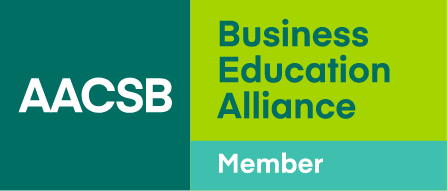Why Top Business School Rankings Don’t Give Students the Full Picture
By this time of year, the majority of major business school rankings publications have revealed their lists of “top” and “best” business programs both regionally and globally. Think Financial Times, US News & World Report, Bloomberg, the Economist, and Forbes, to name just some of the big ones. These rankings are often scrutinized closely by prospective students (and sometimes their parents), school administrators, and recruiters. They measure a variety of data, often submitted by programs and alumni via survey responses. The data fall into categories including admission rates, accreditation standing, job placement, alumni earnings, and faculty productivity, among others. But not all factors that go into business school rankings may be relevant or of interest to potential students—if they look beyond the list and into the methodologies, and not all ranked schools will fit the intended goals of all degree-seekers.
Quality Unseen: When a Business School Becomes a Number
A decade ago, AACSB International published a report on The Business School Rankings Dilemma. In the 10 years that have since passed, many of the more problematic aspects of rankings still remain: “rankings collapse quality into a single dimension—a number. They also limit the number of ranked programs, and apply the same formula regardless of a program’s mission or orientation.” The methodologies differ from one publication to another. The breadth of study varies among schools and programs ranked; programs themselves are not equal in size, offerings, or availability. Additionally, some schools are able to pour lots of time and resources into initiatives, including new centers and institutes, that will likely improve their rankings—but not all schools that may be equal in quality have equal resources. So to look comparatively across rankings can be misleading.
Looking Beyond Business School Rankings: AACSB Accreditation
Given the constantly changing nature of market demands, business school applicants might be best served by looking for specific programs that can accommodate their unique interests to further develop their skills and talent for the workplace—regardless of where or whether a school places in rankings. The best MBA program for an individual will vary from person to person. Specialized accreditation is one way of assuring a program’s excellence that does not place schools in a hierarchy of features deemed important by surveyors. AACSB accreditation ensures that all of its accredited schools meet many rigorous standards for quality education while still allowing flexibility within those standards for programs to be distinct and innovative based on the unique mission of the school. In fact, innovation is one of the key themes that encompass the standards, along with engagement and impact—all three of which are highly valued business traits. And what’s important to the business world now—as well as into the future—is important to AACSB and its accredited schools, making students the ultimate beneficiary of the standards of accreditation.
To give an even fuller picture of how AACSB-accredited schools measure up, here are some key takeaways:
- Less than 5 percent of the world’s more than 16,500 institutions offering business degrees have earned AACSB accreditation.
- AACSB accredits more than 90 percent of ranked schools, far ahead of other global accreditors such as EQUIS and AMBA.
- The same standards that are applied to these 90 percent of ranked schools also apply to AACSB’s hundreds of other accredited schools not on rankings lists, so looking to AACSB will provide deeper insight into the highest-quality management education programs globally.
- AACSB Accreditation is considered the “highest standard of quality” for business schools, and with 745 accredited institutions in 50 countries, over 1,450 member institutions, and more than 40,000 thought leaders, educators, volunteers, and business innovators in 90 countries, AACSB’s mission and reach impacts over 2 million students around the world each year.
- AACSB alumni are among the world’s most influential leaders, innovators, and entrepreneurs impacting business, government, and nonprofit sectors. For the 2014 Financial Times 500 Most Valuable Companies, 97 percent of CEOs with business degree backgrounds attended an AACSB-accredited school.
Given these insights, prospective students might just view rankings from a new perspective and consider a more comprehensive way of finding the right b-school to attend to meet their goals. While a precise picture of the future workforce skillset is yet to be determined for the next several decades, some trends are telling. “Soft” skills are more desired across most sectors of industry, internationalization of both academic programs and companies is ever important, and technological aptitude is a must in today’s connected, digital workplace. Perhaps considerations like these should be launching points for a student’s b-school search. Many of AACSB’s 745 accredited schools—both on the rankings lists and off—are uniquely qualified to accommodate students’ criteria. It’s worth asking, in a job environment that is increasingly seeking individualized skills over broad degree credentials—which is shaping the way colleges offer programs—do these rankings carry as much actual significance as they do hype?
Perhaps Bloomberg puts it best in its advice to prospective students: “Don’t let rankings alone make your school decision for you. … [D]eciding where to go to school is a personal decision. A school that’s right for one student may be wrong for another.”





